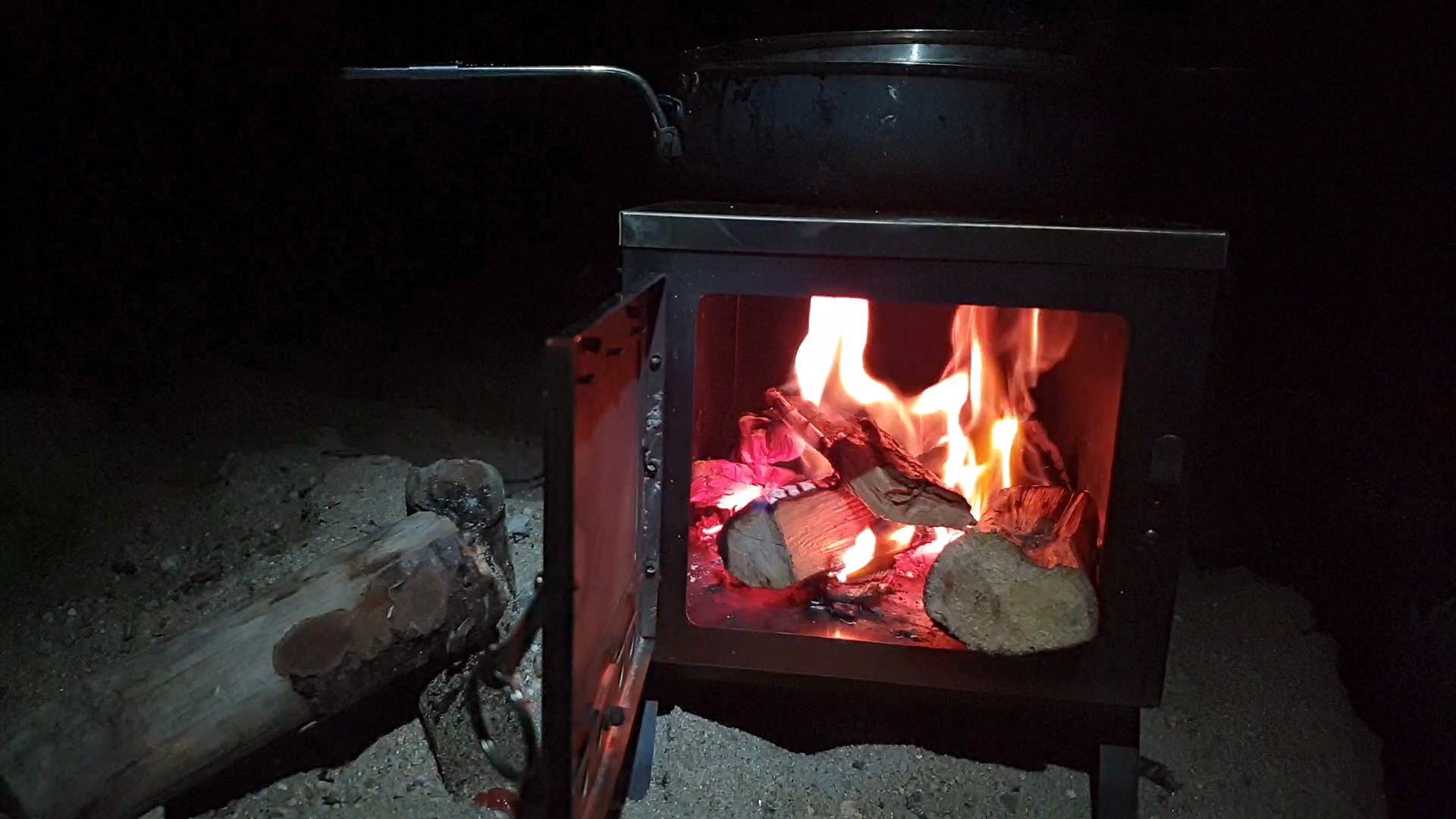One of my readers (hi Mark!) asked about my glamping set up the other day, and the answer started to get quite long so I’ve converted it into a blog post. Basically, you won’t need to be hot tenting very often in Scotland, but on those occasions you do, it’s pure dead brilliant. Warm toes, dry clothes – just priceless!
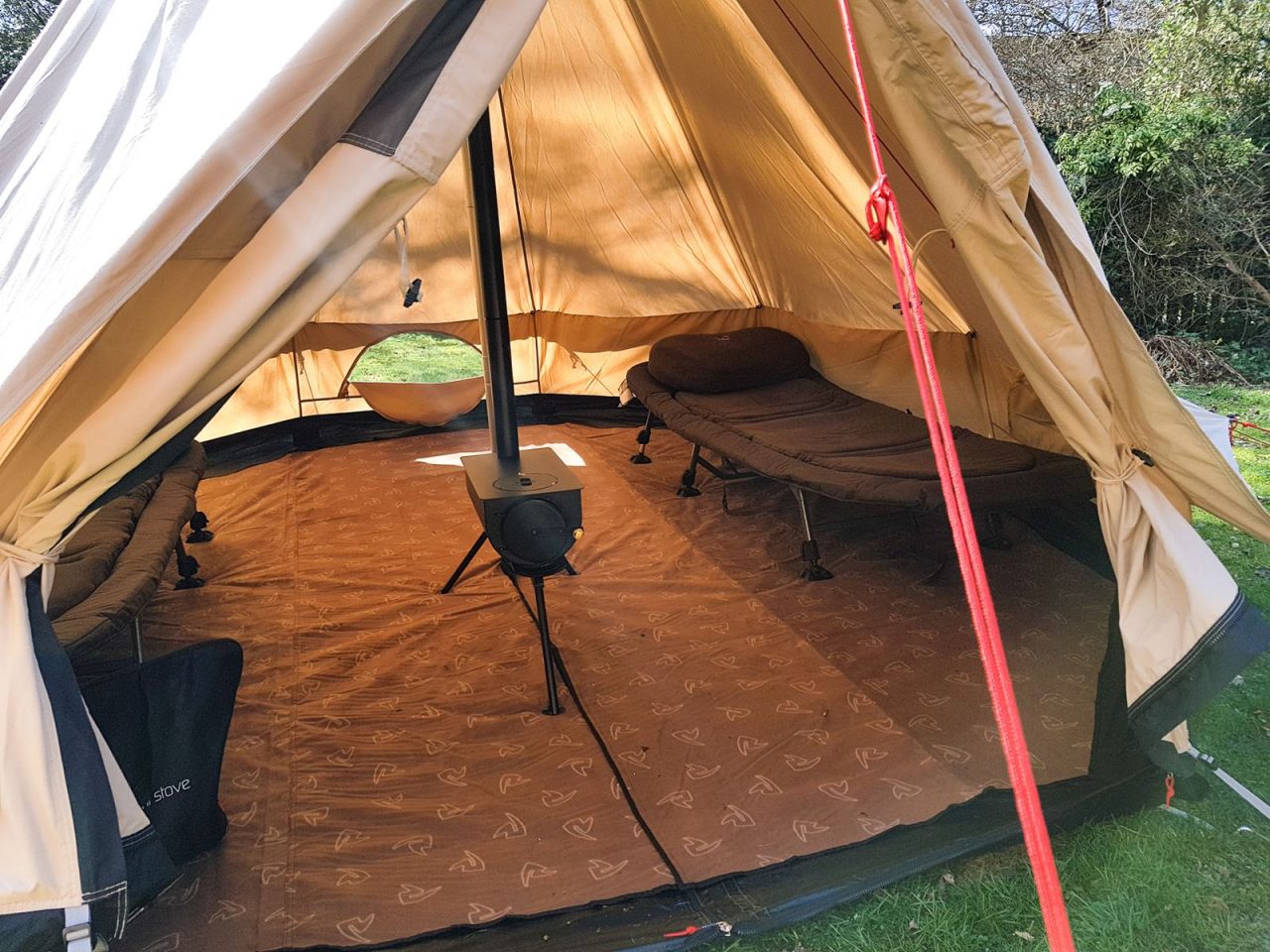
My main kit is all from Robens, a Danish tentmaker. The tent is a Klondike Tipi tent made of a polycotton based material. It has a heavy duty groundsheet and I added a matching tent carpet. The stove I have is also from Robens – the Denali – and was deliberately bought to make sure it matched the tent. Depending on circumstances I also take a couple of TFG camp beds. These are designed for carp fishing and are mega comfortable, incomparably better than mats or the simple wire legged camp beds you can buy.

The point of all this was to have a very comfortable set up for summer camping with my wife and dog and also to act as a base camp for multi-day fishing trips throughout the year. The bell/tipi tent style offers plenty of usable space and great headroom. Previously we had an older family tent which was pretty good but occupied an enormous amount of space and really needed a “proper” campsite.
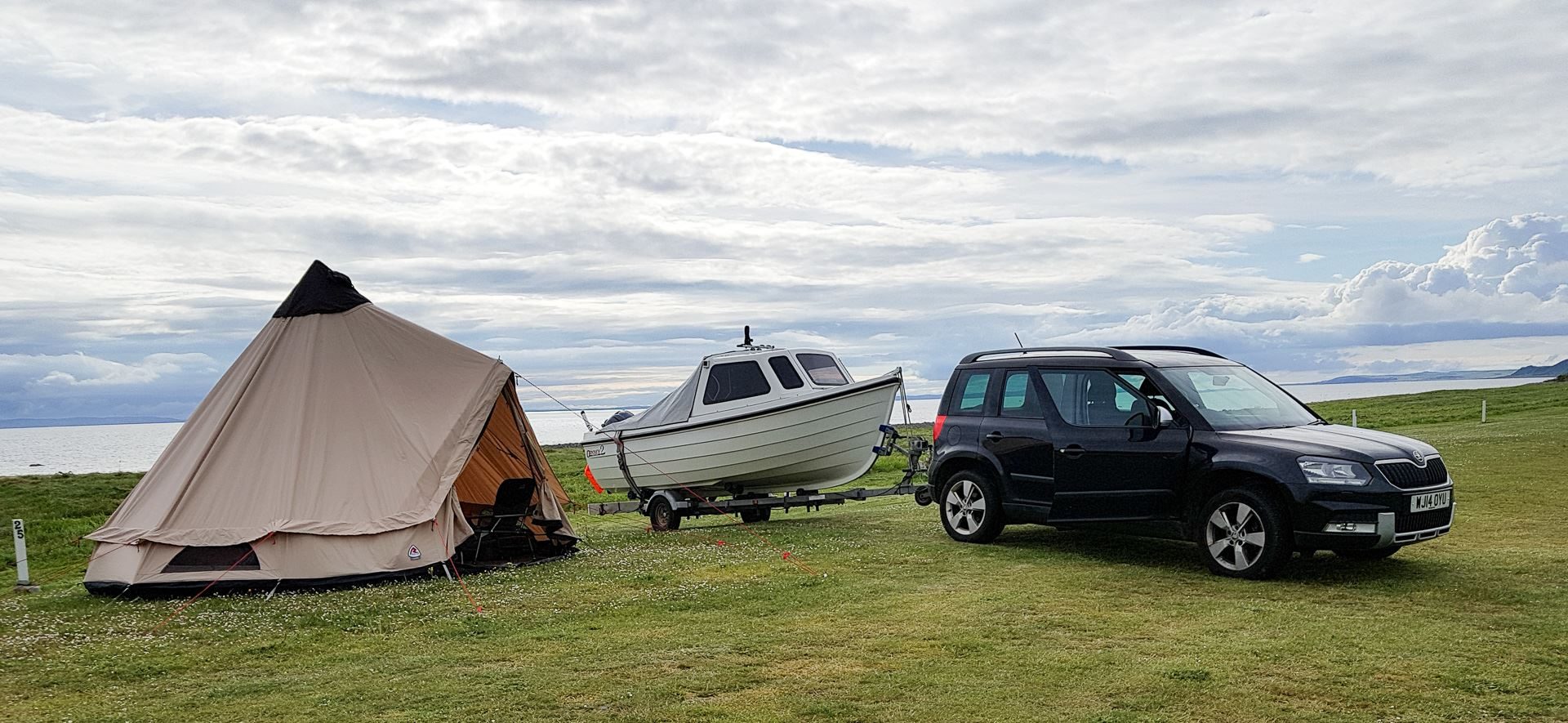
A friend at work put me on to the idea of bell tents. She was very keen on them and had a Robens with a tent stove. Before then I suppose I’d been lumping them in alongside wigwams and other peripheral options in the camping world. Cara persuaded to take a closer look and I’m very glad I did.
The Klondike
I do like the Klondike – it has good standing headroom, feels solid and is easy to put up. It’s supposed to sleep 6, although that’s probably fairly tight in a 3.9 metre circle with a pole in the middle of it. My son did just this for a 4 or 5 night camp though, so it is possible.
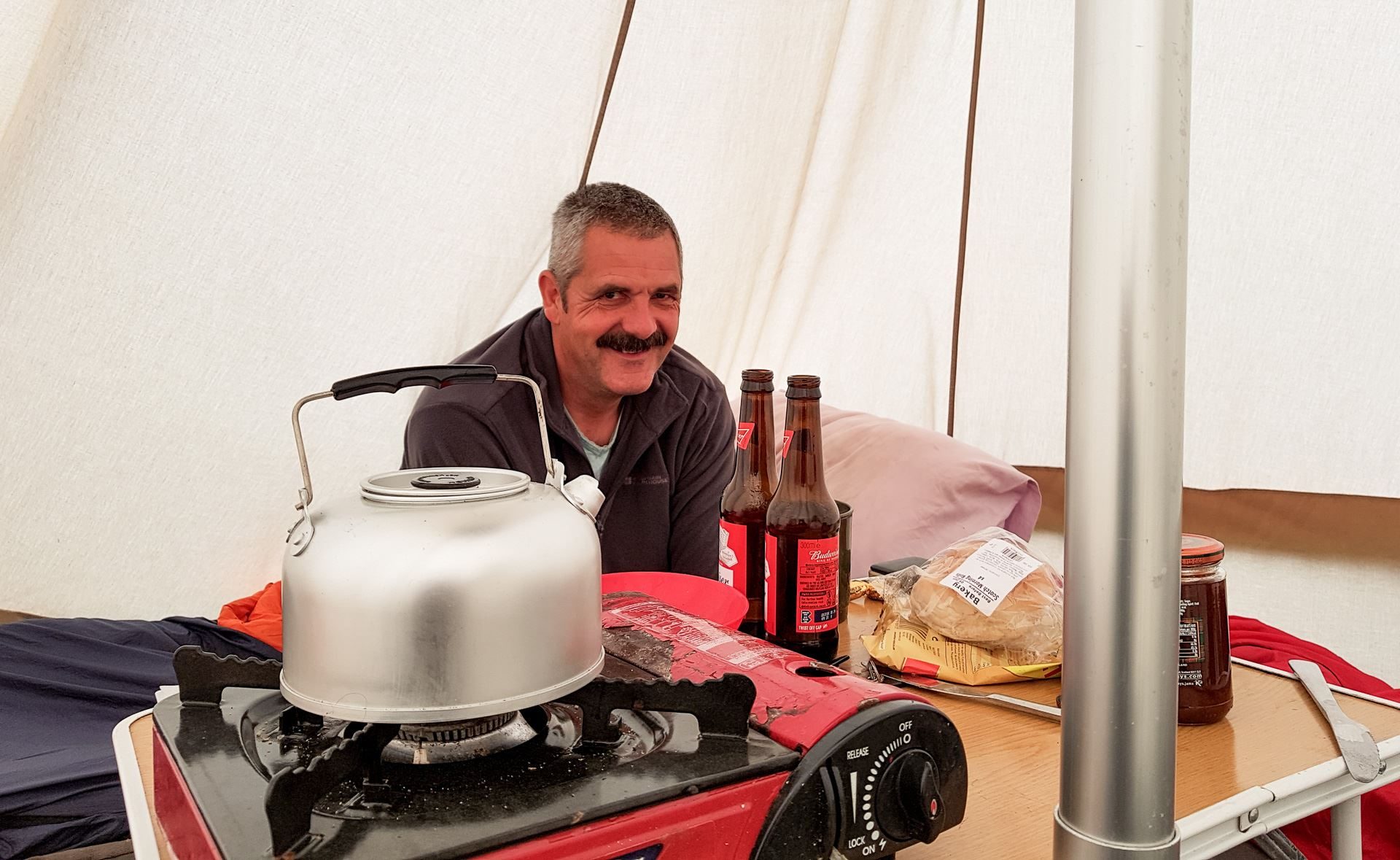
I’ve not had any problems with this tent, but another reader, Ash, returned his after finding significant water getting in during a wet camp – so this something to check out in a bit more detail. I’ve had it for about 2.5 years now and it’s been used for maybe 18-20 nights. However, I’ve never used it in really bad wind or rain, which is why I’d suggest doing some research on potential water ingress problems. Ash has gone for a Tentipi 7 man tent as a replacement, so that’s another option to check out.
Robens Denali Stove
Much though I like my setup, I wouldn’t buy the Robens Denali stove again. It works fine, but is quite basic and there are better options out there. I am absolutely no expert, but I’d turn towards stainless steel and also a bit of tempered glass. It might sound cutesy but the sight of cheerful flickering flames through the stove window is wonderful on a long Scottish winter night! Something like the Norwegian G stove is a bit more expensive but probably a better bet for the long term. That said, I get on fine with the Denali as it is – it’s not like I’m using it for weeks on end! (Incidentally I just checked Robens site, and the list price of a Denali is £330 which is taking the proverbial. I paid about half that less than 3 years ago).

Apart from a couple of burn-in sessions I’ve only used the stove on 3 winter nights, so my practical experience is limited, but having a warm tent on a long, cold winter night is simply fantastic. There are two issues I’ve had – it can be a little smoky until the chimney starts to draw properly (my inexperience, I think), and the tent can get too hot if you’re enthusiastic with the firewood. I do have a monoxide detector but it’s never complained. You can cook and boil water quite happily on these stoves too.
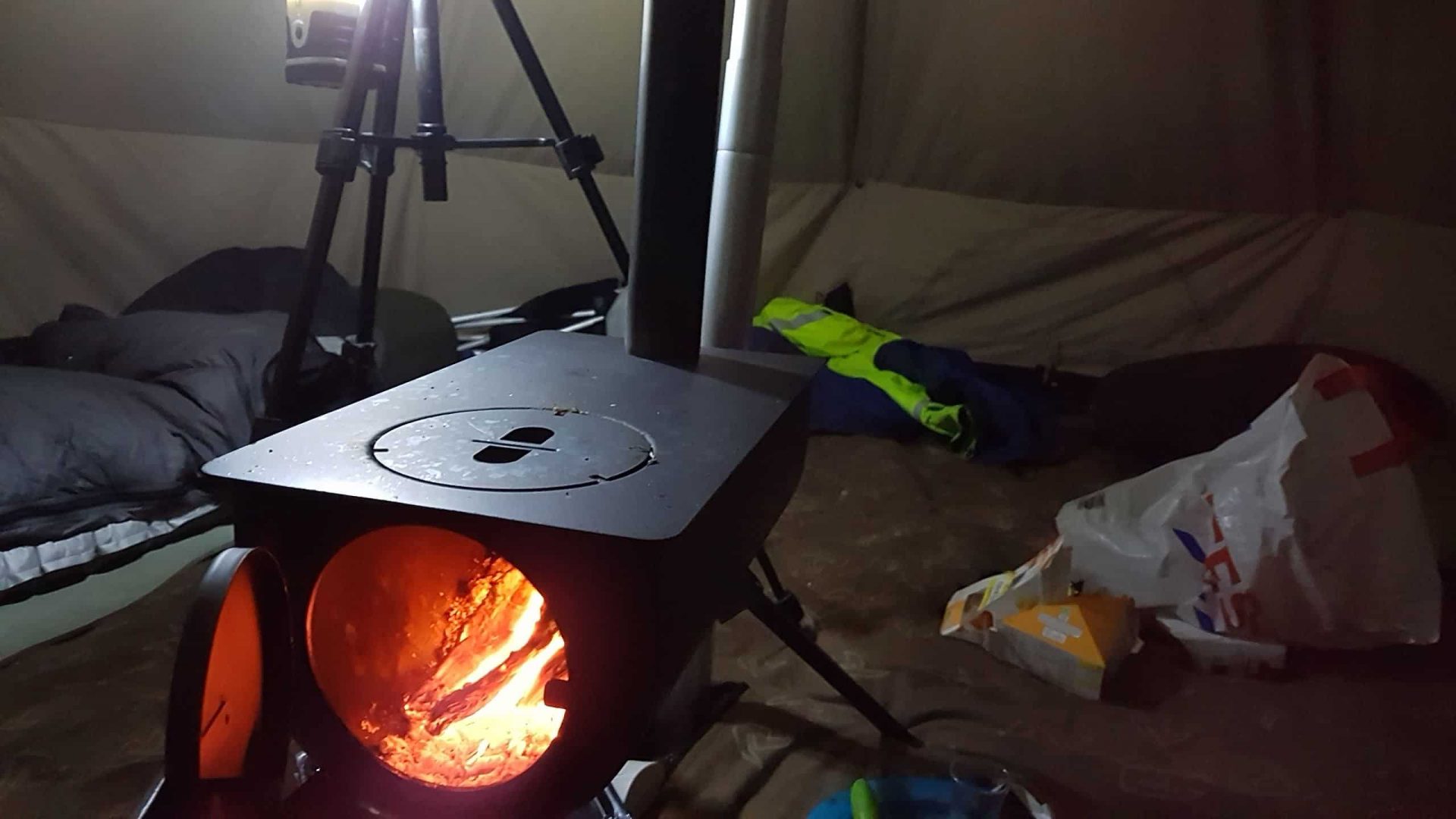
Little Luxuries
The tent carpet was a more marginal purchase – really aimed at encouraging my wife to come along for a few days here and there – but it’s actually great, and much more comfortable on the feet than a groundsheet. It just clips into place around the tent and takes moments to fix. The dog loves it too 🙂
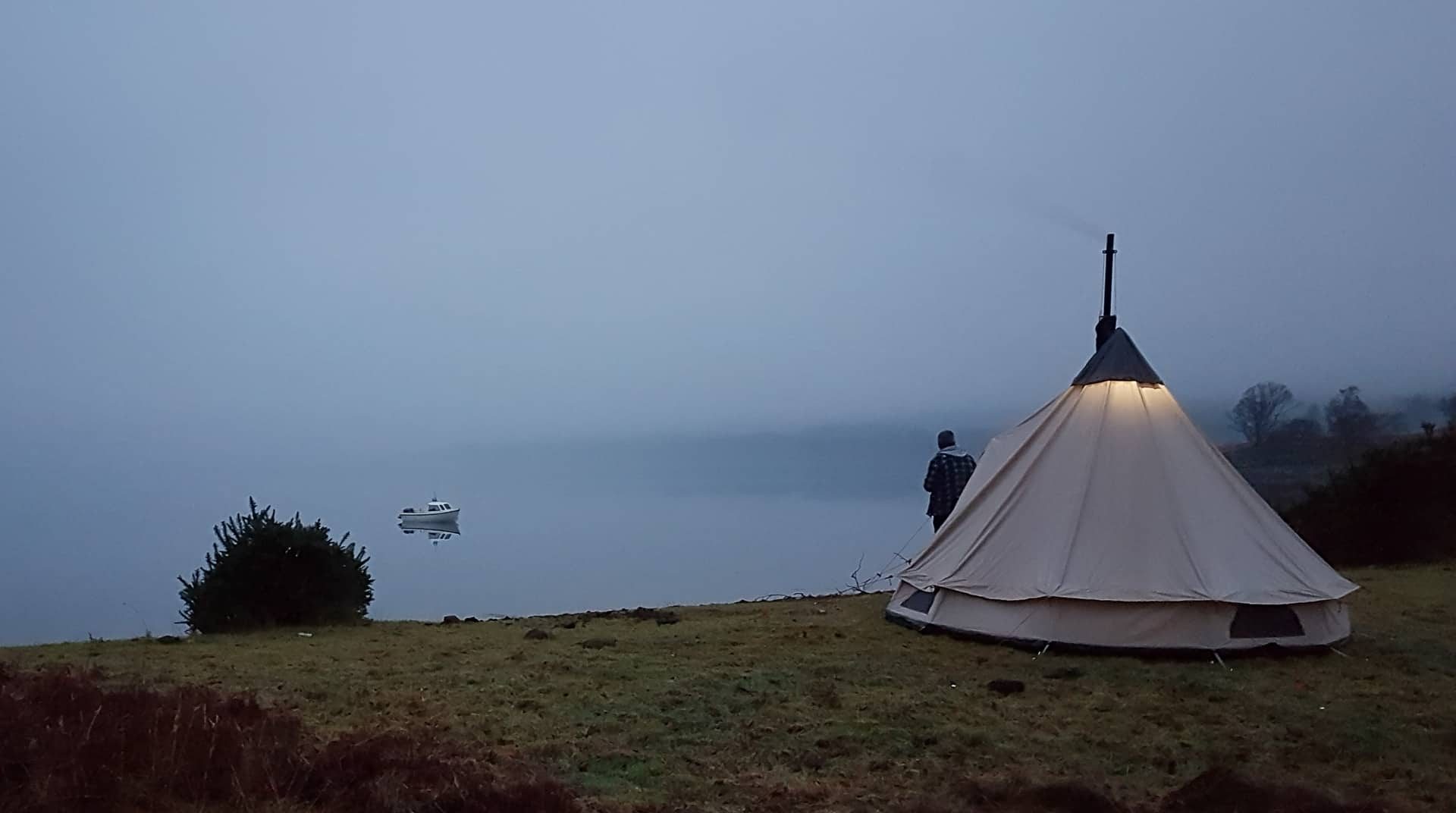
The beds were a revelation to be honest. Hugely comfortable and you can just use a duvet with them (big plus from my wife’s point of view). They’ve been used loads of times at home for assorted visitors. Absolutely brilliant pieces of kit!
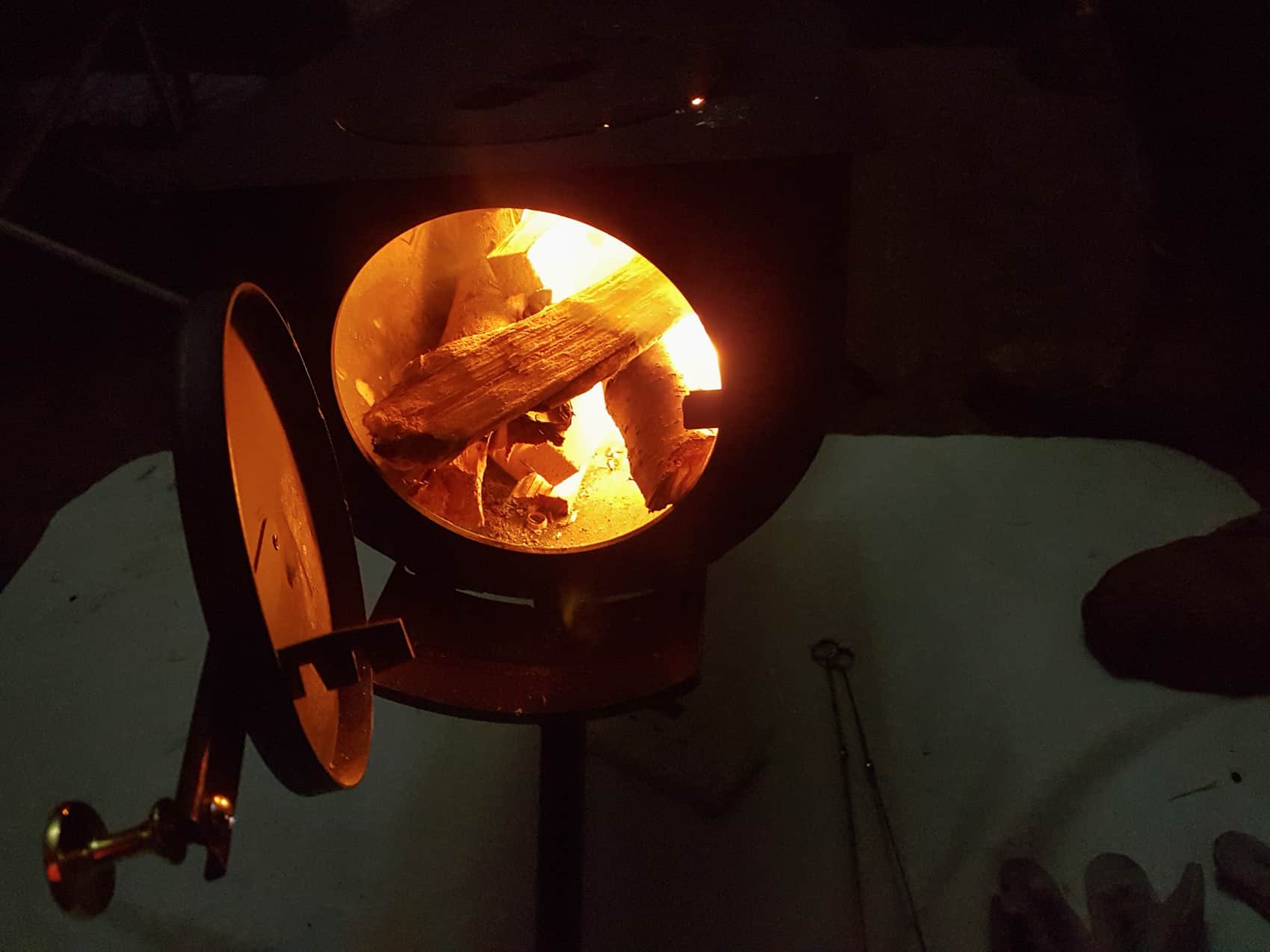
To summarise…
The upside of all this is supremely comfortable camping in summer and winter, and I’m really sold on the concept. However there is a downside, which can be summed up as weight and space. The tent and stove weight something like 30kg between them and are pretty bulky too (especially the stove – even more so if you’re hauling wood along). The carp beds are another 10kg each and are awkward to stow as well. Basically you’re car (or boat) camping, possibly with one or two rear seats down flat. The polycotton material also gets pretty heavy in wet weather, and can take a lot of drying when you get home – more so than a conventional tent.
The stove flues also need cleaning. Not difficult (I use a toilet brush to clean the chimney sections), but pretty messy. Wet or resinous wood seems to cause more soot, and I’ve not had a problem when using dry hardwood.
And the future is – Titanium!
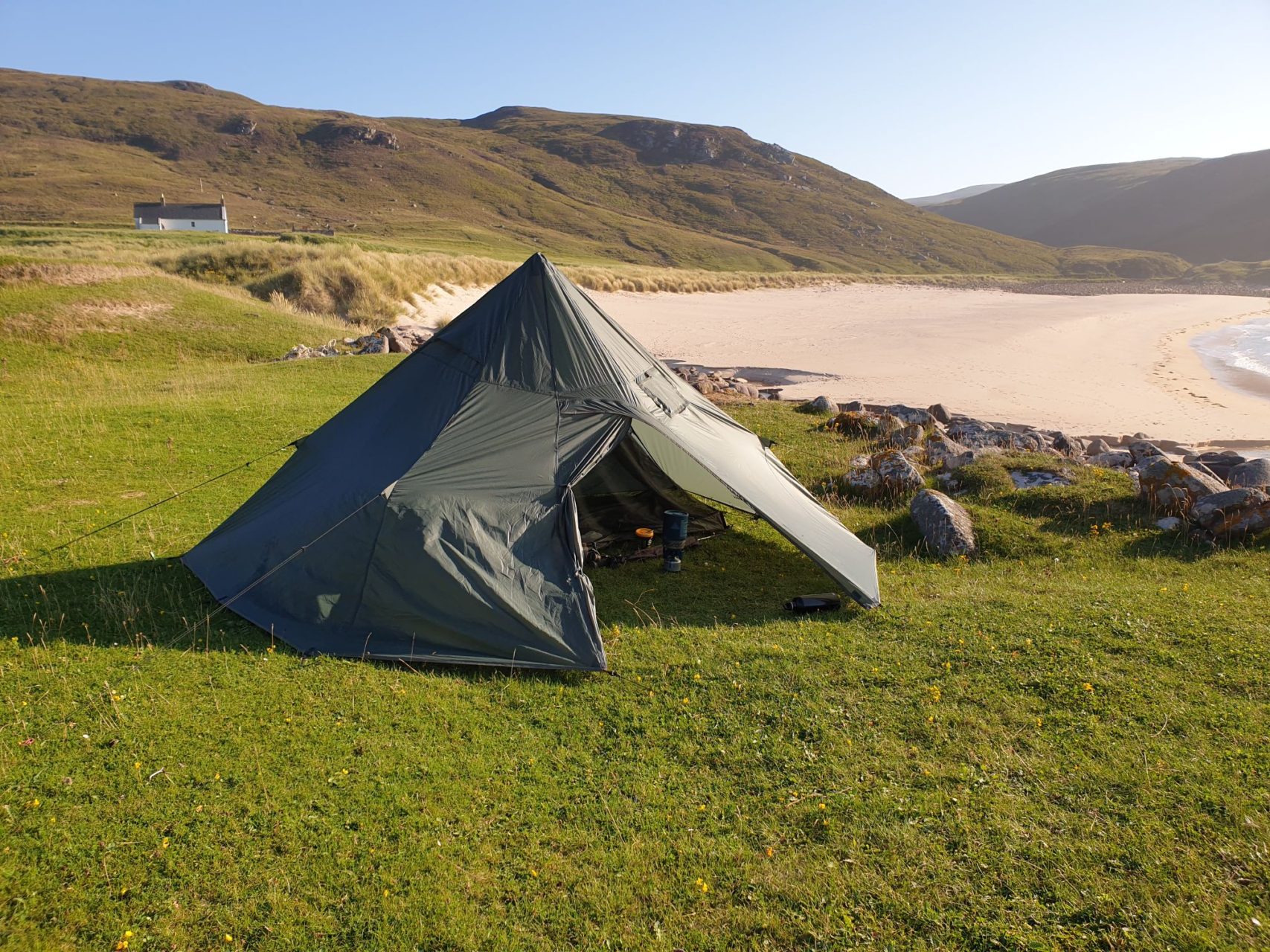
Recently I’ve taken another plunge and bought a lightweight titanium stove for backpacking, together with a One-Tigris Iron Wall tent. This is really aimed more at backpacking or kayak camping and with a stove that weighs just 1.8kg, but I guess it underlines just how much I’m sold on the concept!
I’ve used the tent 5 or 6 times but the stove has only been used as a firebox up until now. That’s the impact of lockdowns and warmish weather rather than any technical deficiency. The stove is lightweight and so flimsier and warps a little with the heat, but I’ve been quite impressed so far and look forward to a more substantial test. The tent is OK quality and quite spacious. I had it up in Cape Wrath for a 3 day hike in August and it worked fine with just a walking pole to support it, but it’s not an all-weather tent really. Give it another year and I might do another write up of lightweight hot-tenting!
